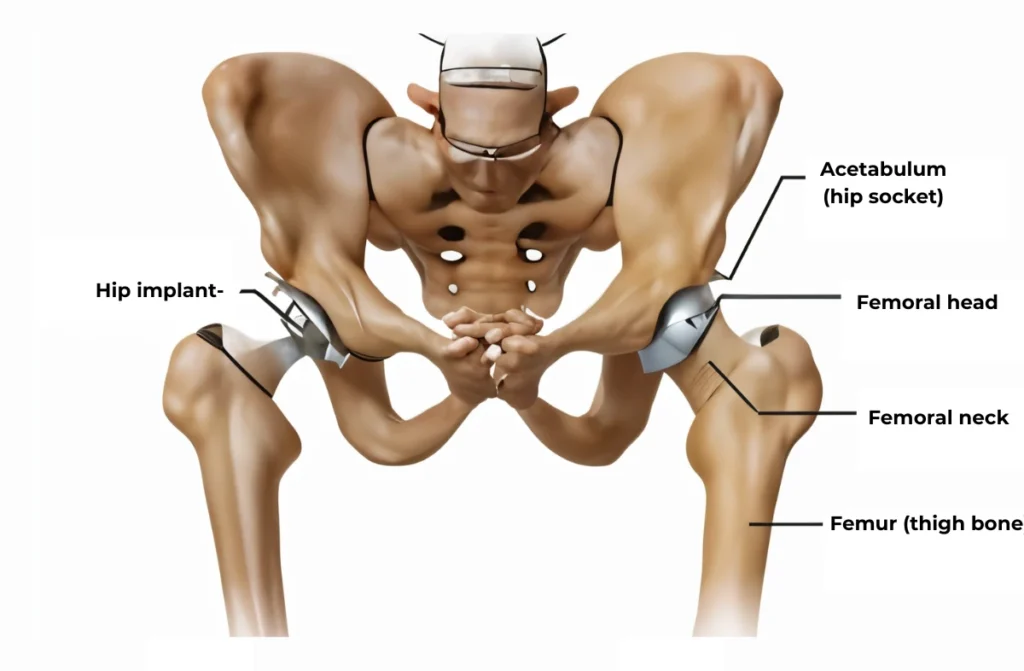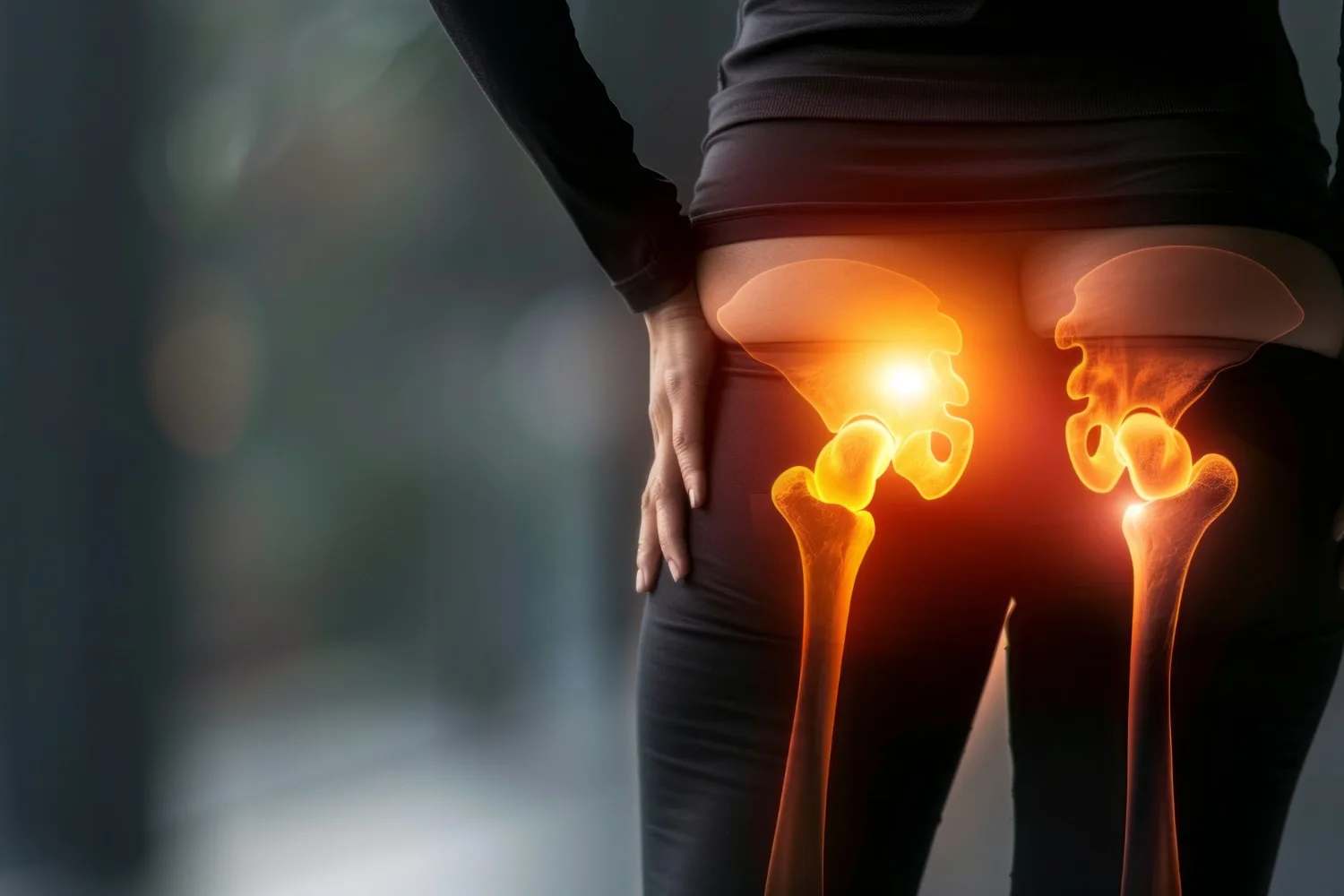Hemi Hip Replacement in Chennai is a surgical procedure designed to replace the damaged or fractured part of the hip joint, typically the femoral head, with an artificial implant. This procedure is commonly recommended for patients with hip fractures, offering pain relief and improved mobility.
Understanding Hemi Hip Replacement
Hemi hip replacement, also known as partial hip replacement, is a surgical procedure where only the damaged or fractured part of the hip joint, typically the femoral head, is replaced with an artificial implant. This procedure is commonly performed on older adults who have suffered a hip fracture, especially those who may not require a total hip replacement. The goal of a hemi hip replacement is to relieve pain, restore mobility, and allow the patient to return to their daily activities. It is less invasive than a total hip replacement and generally involves a shorter recovery time.
Why Hemi Hip Replacement is Important
Hemi hip replacement in chennai is particularly beneficial for patients with limited damage to the hip joint. By focusing on replacing only the damaged part of the hip, this surgery minimizes the trauma to surrounding tissues and reduces the overall recovery period. It is an effective solution for managing pain and improving the quality of life for individuals suffering from specific types of hip injuries.

Eligibility for Hemi Hip Replacement
Hemi hip replacement in chennai is primarily recommended for individuals who have sustained a hip fracture, particularly in the femoral head, and are not candidates for total hip replacement. The procedure is most commonly performed on:
- Older Adults: Especially those with osteoporosis or other conditions that weaken the bones.
- Patients with Limited Hip Damage: Those whose hip joint is otherwise healthy except for the fractured femoral head.
- Individuals with Mobility Issues: Those who need a quicker recovery to regain mobility and independence.
Factors Considered for Hemi Hip Replacement Eligibility
- Bone Health: Patients with good bone health in the rest of the hip joint are ideal candidates.
- Age and Activity Level: Generally recommended for older, less active individuals who may not require the full range of motion provided by a total hip replacement.
- Overall Health: The patient’s overall health and ability to undergo surgery are critical factors in determining eligibility for a hemi hip replacement.
Partial Hip Replacement vs. Total Hip Replacement
While both procedures aim to relieve pain and restore function, a partial hip replacement focuses on replacing only the damaged part, making it a less invasive option compared to a total hip replacement, which replaces the entire hip joint.
Hemi Hip Replacement Procedure
The hemi hip replacement procedure involves removing the damaged femoral head and replacing it with a metal or ceramic implant. The procedure typically follows these steps:
- Surgical Incision and Access: The procedure begins with a precise surgical incision to access the hip joint, exposing the damaged femoral head.
- Anaesthesia: General or regional Anaesthesia is administered to ensure the patient is comfortable and pain-free throughout the procedure.
- Removal of Damaged Bone: The damaged or fractured femoral head is carefully removed to prepare the area for the implant.
- Implant Placement: A specially designed implant is inserted into the femur, replacing the removed bone and restoring function to the hip joint.
- Closure and Recovery: The incision is meticulously closed, and the patient is transferred to a recovery area to begin the healing process under close observation.
What to Expect During Hip Surgery
- Anaesthesia: The procedure is usually performed under general or regional Anaesthesia.
- Surgery Duration: The surgery typically takes about 1 to 2 hours.
- Post-Surgery Monitoring: Patients are monitored for a few hours after surgery before being moved to a hospital room.
Advantages of Hemi Hip Replacement Surgery
- Less Invasive: Compared to a total hip replacement, the hemi hip replacement is less invasive, leading to quicker recovery.
- Targeted Treatment: Focuses on replacing only the damaged part of the hip, preserving as much of the natural joint as possible.
- Shorter Hospital Stay: Patients often experience a shorter hospital stay and faster discharge.
Post Operative Care After Hemi Hip Replacement
Proper postoperative care is essential for a successful recovery after a hemi hip replacement. This includes:
- Pain Management: Medications will be prescribed to manage pain and discomfort during the initial recovery period.
- Physical Therapy: Early mobilization and physical therapy are crucial to regaining strength and mobility in the hip joint.
- Wound Care: Keep the surgical site clean and dry to prevent infection. Follow the doctor’s instructions for dressing changes.
- Activity Restrictions: Avoid high-impact activities and heavy lifting during the early stages of recovery to allow the hip to heal properly.
Recovery Progress
- Regular Follow-Up Visits: Scheduled appointments with the surgeon to monitor the healing process and address any concerns.
- Gradual Increase in Activity: Slowly increasing physical activity levels as recommended by the physical therapist.
- Avoiding Certain Movements: Avoid crossing your legs, bending too far, or twisting the hip, as these can put stress on the new implant.
Benefits of Hemi Hip Replacement
Hemi hip replacement offers several advantages for patients, including:
- Pain Relief: Significant reduction in hip pain, allowing for improved mobility and quality of life.
- Quick Recovery: Patients often experience a faster recovery time compared to a total hip replacement.
- Lower Risk of Complications: Fewer risks compared to more extensive surgeries, such as total hip replacement.
- Improved Functionality: Restores the function of the hip joint, enabling patients to return to their daily activities with greater ease.
Risks Associated with Hemi Hip Replacement
As with any surgical procedure, there are potential risks involved with hemi hip replacement, including:
- Infection: Although rare, there is a risk of infection at the surgical site.
- Blood Clots: Patients may be at risk of developing blood clots after surgery, which requires careful monitoring.
- Implant Issues: There is a possibility of implant loosening or dislocation, particularly if postoperative care guidelines are not followed.
- Rehabilitation Challenges: Some patients may experience challenges during rehabilitation, such as stiffness or limited mobility, which may require additional therapy.
Why Choose Us for Partial Hip Replacement Surgery in Chennai?
Choosing the Best Partial Hip Replacement Surgery in Chennai ensures that you receive world-class care from expert surgeons using the latest techniques. We focus on providing personalized treatment plans, including comprehensive preoperative consultations and postoperative care that optimizes your recovery. Contact us to deliver excellent results that restore your mobility and improve your quality of life.
Conclusion
Hemi hip replacement in chennai is an effective surgical solution for those suffering from hip fractures, particularly in the femoral head. By replacing only the damaged part of the hip joint, this procedure offers a less invasive option compared to total hip replacement, leading to quicker recovery and reduced complications. Proper postoperative care, including physical therapy and regular follow-ups, is crucial to ensuring a successful recovery.
While the recovery period may vary depending on the patient’s overall health and the specific nature of the injury, most patients experience significant improvements in mobility and quality of life after the surgery. It’s important to follow all medical advice during the recovery process to minimize risks and achieve the best possible outcome. Hemi hip replacement provides a viable path to regaining independence and returning to daily activities with less pain and improved function.
Read also: Hip Resurfacing Surgery


